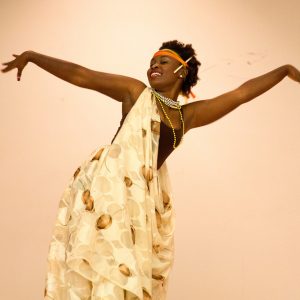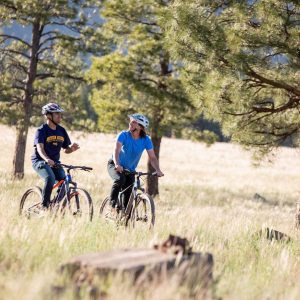Does exercise feel like punishment? Something you do because the media tells you “it’s healthy”? Or something you feel like you must do to burn off the extra calories you ate last night?
You no longer have to feel that way towards exercise! Keep reading to find some different ways to begin the journey to healing your relationship with exercise.
If you’ve noticed you don’t really like how you feel about physical activity, here are some initial steps you can take to work on healing your relationship towards exercise/fitness:
 Tip 1: Focus on reframing your definition of exercise.
Tip 1: Focus on reframing your definition of exercise.
Sometimes the word “exercise” can have negative connotations of vigorous, painful, and unenjoyable forms of moving your body. Switching the words you use when engaging in movement can shift your whole perspective!
For example, some people think the phrase “physical activity” feels much broader. Other people like the word movement because it feels very inclusive of all different ways of moving our bodies. What word(s) do you like most?
Tip 2: Practice mindful movement.
Mindfulness is the act of noticing and acknowledging what’s going on without judging or criticizing yourself. Therefore, mindful movement involves noticing how you feel physically and mentally before, during and after physical activity without judgment or criticism.
 Mindful movement has 4 main tenets:
Mindful movement has 4 main tenets:
- Choose movements that rejuvenate, rather than exhaust or deplete
- Choose movements that enhance the mind-body connection
- Choose movements that alleviate stress, rather than amplify it
- Choose movements that provide genuine enjoyment and pleasure.
Tip 3: Explore forms of movement that you personally enjoy.
It’s okay if your friend loves running but you hate it. It’s also okay if your sister loves going to the gym but you’d rather workout outside. Sometimes we get stuck in a rut of doing the same old thing.
Check in with yourself: Do you like the forms of exercise you choose to engage in? Why or why not? What other forms of physical activity have you been curious to try? What equipment do you need to try it/them out (e.g., a tennis racquet, walking shoes, yoga mat, etc.)?
Tip 4: Peel back the layers and figure out your “why”.
Get curious about your “why” for exercise. If you notice it’s mostly for external reasons (e.g., weight loss/gain, burning calories, making your body look a certain way), dig a little deeper. What am I hoping to experience if I reach these external goals? Are those things I can choose to experience now, regardless of whether my body changes in those ways?
A good way to dig into this is to ask yourself when you stopped moving for fun in the shift from childhood to adolescence/adulthood. For example, “I used to love to climb trees and ride my bike around the neighborhood. When did that stop and why? …Are there activities I would like to go back to?”
As I’ve personally dug into my own reasons for exercise and started working on healing this relationship, I realized that I often engaged in exercise I disliked, focused on the numbers, and let go of enjoyable movement.
Since I’ve started healing my own relationship with movement, I’ve discovered I enjoy a wide variety of activities like racquetball, rock climbing, rollerblading, yoga, walking, hiking, stretching, weightlifting, skiing, and cycling.
I brought back my childhood love of rollerblading (well…when it’s warm outside) and look forward to my physical activity of choice each day. I started to go to physical therapy so that I could strengthen parts of my body that were prone to injury, in order to keep doing the things I love.
In short, healing your relationship with exercise is well worth the time and effort it takes, and it doesn’t make you any less “athletic.” In fact, having a healthy relationship with exercise can help you do the activities you love for longer and in a more sustainable way!
Sign up to see one of the coaches from UCAN to get more support with shifting your thoughts and feelings about exercise.
Sources: The Intuitive Eating Workbook by Elyse Resch, Evelyn Tribole, & Tracy Tylka and Train Happy by Tally Rye